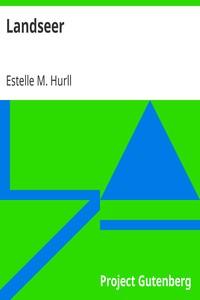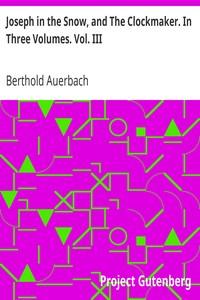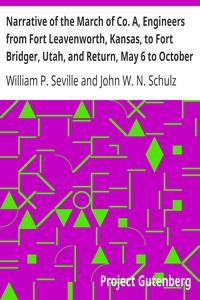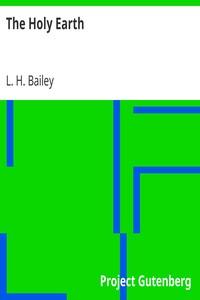Read this ebook for free! No credit card needed, absolutely nothing to pay.
Words: 8062 in 4 pages
This is an ebook sharing website. You can read the uploaded ebooks for free here. No credit cards needed, nothing to pay. If you want to own a digital copy of the ebook, or want to read offline with your favorite ebook-reader, then you can choose to buy and download the ebook.


: Landseer A collection of fifteen pictures and a portrait of the painter with introduction and interpretation by Hurll Estelle M Estelle May - Landseer Edwin Henry Sir 1802-1873
f a sleeping dog. Ordinarily he delighted in showing the expressiveness of a dog's eye. This being here impossible on account of the model's condition, we have instead a picture which we would not exchange even for Suspense or Dignity and Impudence. If we have here less of those higher qualities which are brought out in the dog's human relationships, we see the better the purely animal side of his nature.
The union of power with repose is a rare combination in art, and one we associate with Greek sculpture. The picture of the Sleeping Bloodhound has what we call plastic qualities. We have a sense of the massive solidity of the dog's body, as if he were modelled in clay. In this respect the picture should be compared with the Newfoundland dog called the Distinguished Member of the Humane Society, and with the lion of the Nelson monument.
The helmet beside the dog is one of those picturesque accessories which Landseer enjoyed putting into his works. Like the gauntlets in the picture of Suspense, it suggests the knightly deeds of chivalry with which the bloodhound seems appropriately associated. The reflection of light from the polished surface of the metal makes an effective touch in the picture.
It is by no accident that the helmet occupies the place it does; it is an essential part of the composition, serving precisely the same purpose which the cavalier's hat does in the picture of the King Charles Spaniels. Both compositions gain by this device the necessary height to balance their horizontal lines.
THE HUNTED STAG
In his study of the deer in the Scottish Highlands, Landseer found almost inexhaustible material for his art. In fact, nothing of interest escaped him in the life of this noble animal. If we could have a complete collection of his pictures on this subject, they would set forth the entire story of the deer. The painter, as we have seen, did his hunting with a sketch-book, and brought home, instead of so many head of game, so many pictures with which to delight future generations. Many of these pictures deal with tragic subjects, as in our illustration of a Hunted Stag borne down a mountain torrent with the hounds upon him. The pathetic side of animal life appealed strongly to Landseer's dramatic imagination. He who could see so readily the comic aspects of a situation was equally quick in his appreciation of suffering.
It has been said by a close observer of animal life that no wild animal dies a natural death. Every creature of the woods lives in the midst of perpetual dangers from some one of which, sooner or later, he comes to a violent or tragic end. The rigor of the elements sometimes overcomes him,--rain or snow, heat or cold, flood or avalanche, the falling tree or the crashing rock. It may be that some other animal which is his natural enemy finally falls upon him and destroys him. The most cruel fate of all is when he falls into the power of the sportsman, matching against the wild creature's instincts his wits, his dogs, and his rifle. In such an unequal contest man seldom fails to win.
It would seem that the deer was well fitted by nature to cope with his enemy the sportsman. His senses are so exquisitely delicate that he detects the approach of the hunter at a great distance. As soon as he takes alarm he flees from the danger, covering the ground in flying leaps with incredible speed. From time to time he pauses on some hilltop to locate anew the position of the enemy.
As he begins to tire, he resorts to stratagem as a substitute for speed. Sometimes another deer comes to his aid, taking the track he has made, while he hides in some thicket or flies in a different direction. One of his tricks is to run backward over his course for a number of yards, and then leap aside to start in another way. The story of the Sandhill Stag tells how a deer used this device three times in succession, the last time returning to a thicket near his track from which he could discern his pursuer long before the trail would bring him too near. After this, grown more desperate, the stag circled round till he joined his old track, and then bounded aside to let the hunter follow the cold scent.
When all such artifices fail, the hunted deer's last resort is the water. Plunging into a lake or mountain stream, he swims up the current, taking care not to touch any brush on the bank, lest he leave a scent for the hounds. It is said that he can even hide under the water, leaving only the tip of his nose above the surface.
The stag of our picture has reached the water too late; already the hounds are upon him. The mass of struggling animals is swept along the current of a mountain stream to an inevitable doom. The hunted creature raises his noble head in his dying agony, seeking to escape his tormentors. Even yet he strikes out in a brave attempt to swim, but the end is only too plain.
The painter's art has set the tragedy very forcibly before us. Behind is a lake, around which rises a range of high hills. A single break in their outline admits a ray of sunlight into the sombre grandeur of the scene. The narrow stream which issues from the lake falls between huge boulders, in a steep descent. The struggle of the dogs with their prey churns the torrent into foam about the body of the stag.
Free books android app tbrJar TBR JAR Read Free books online gutenberg
More posts by @FreeBooks

: Joseph in the Snow and The Clockmaker. In Three Volumes. Vol. III. by Auerbach Berthold Wallace Grace Lady Translator - German fiction Translations into English


: Joseph in the Snow and The Clockmaker. In Three Volumes. Vol. II. by Auerbach Berthold Wallace Grace Lady Translator - German fiction Translations into English





